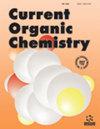Overview of Synthesis and Applications of Unnatural Lipophilic α-Amino Acids
IF 2.1
3区 化学
Q3 CHEMISTRY, ORGANIC
引用次数: 0
Abstract
: Naturally and synthetically obtained lipophilic α-amino acids exhibit diverse properties and applications in academia and industry. Unnatural hydrophobic/lipophilic amino acids lacking polarity in their side chains manifest the biologically significant structure of peptides and proteins. The hydrophobic effect of lipophilic amino acids stabilizes the structure of proteins, peptides, and enzymes during their indigenous folding-unfolding phenomena. The presence of these amino acids in the backbone of protein and peptide-derived drug delivery systems such as lysine-derived surfactants and glycodendrimers can also enhance the cell penetration of drugs of interest. Cationic poly-l-lysine dendrimers, α-amino oleic acid, and a naturally occurring cyclic heptadepsipeptide HUN7293 are recognized as promising biomaterials for developing prodrugs and also serve as biocompatible surfactants in the food and pharmaceutical industries. The synthesis of unnatural lipophilic amino acids, N-lauroyl sarcosine, N-lauroyl glutamic acid, N-octylglycine, N-myristoyl glycine etc. has gained attention for preparing novel compounds for advanced academic, industrial, and societal applications. This review article discusses the applications and synthesis of hydrophobic/lipophilic α-amino acids using ester enolate Claisen rearrangement, chiral auxiliary, chiral pool, chiral catalysts, and many more relevant methodologies.非天然亲脂性 α-氨基酸的合成与应用概述
:天然和人工合成的亲脂性 α- 氨基酸具有多种特性,在学术界和工业界有着广泛的应用。侧链缺乏极性的非天然疏水/亲油氨基酸表现出肽和蛋白质的重要生物结构。在蛋白质、肽和酶的折叠-折叠过程中,亲脂性氨基酸的疏水作用可稳定它们的结构。赖氨酸衍生表面活性剂和糖基二聚体等蛋白质和肽类给药系统的骨架中含有这些氨基酸,也能增强相关药物的细胞渗透性。阳离子聚赖氨酸树枝状聚合物、α-氨基油酸和天然环状七肽 HUN7293 被认为是开发原药的有前途的生物材料,同时也是食品和制药行业中的生物相容性表面活性剂。非天然亲脂性氨基酸、N-月桂酰肌氨酸、N-月桂酰谷氨酸、N-辛基甘氨酸、N-肉豆蔻酰甘氨酸等的合成在制备新型化合物用于先进的学术、工业和社会应用方面获得了关注。这篇综述文章讨论了利用酯烯醇克来森重排、手性辅助剂、手性池、手性催化剂等多种相关方法合成疏水/亲油 α-氨基酸的应用和方法。
本文章由计算机程序翻译,如有差异,请以英文原文为准。
求助全文
约1分钟内获得全文
求助全文
来源期刊

Current Organic Chemistry
化学-有机化学
CiteScore
3.70
自引率
7.70%
发文量
76
审稿时长
1 months
期刊介绍:
Current Organic Chemistry aims to provide in-depth/mini reviews on the current progress in various fields related to organic chemistry including bioorganic chemistry, organo-metallic chemistry, asymmetric synthesis, heterocyclic chemistry, natural product chemistry, catalytic and green chemistry, suitable aspects of medicinal chemistry and polymer chemistry, as well as analytical methods in organic chemistry. The frontier reviews provide the current state of knowledge in these fields and are written by chosen experts who are internationally known for their eminent research contributions. The Journal also accepts high quality research papers focusing on hot topics, highlights and letters besides thematic issues in these fields. Current Organic Chemistry should prove to be of great interest to organic chemists in academia and industry, who wish to keep abreast with recent developments in key fields of organic chemistry.
 求助内容:
求助内容: 应助结果提醒方式:
应助结果提醒方式:


